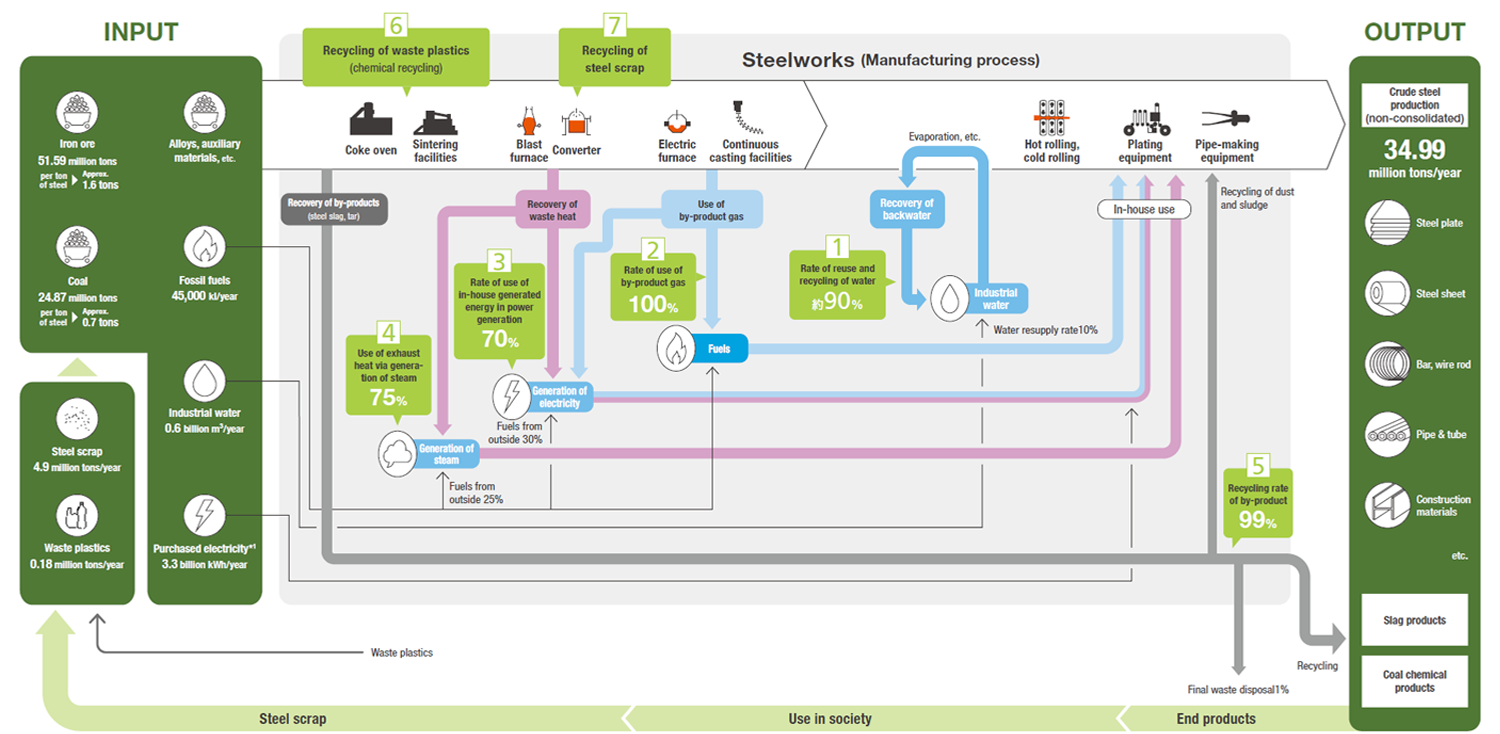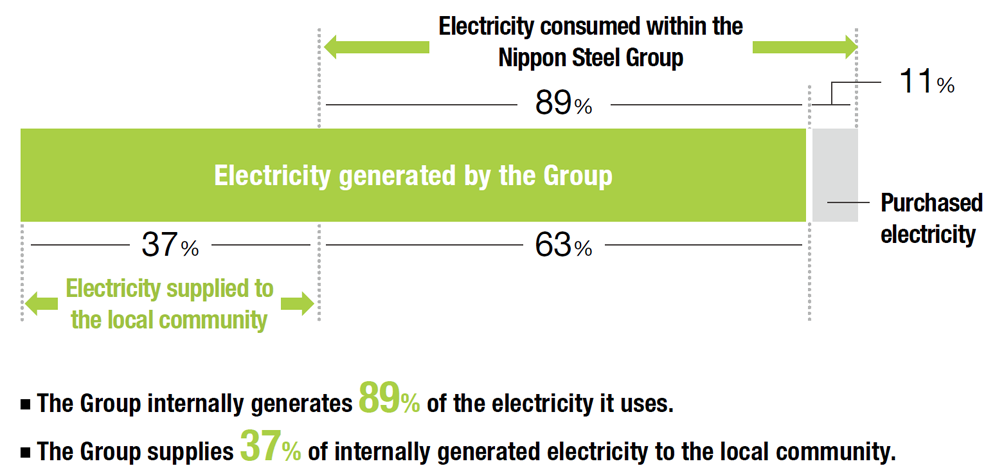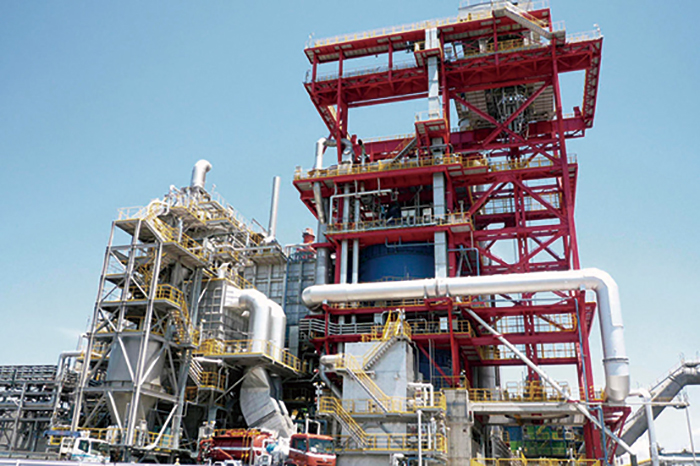Energy Material Balance
Energy and resource circulation in business activities
We are not only moving toward the achievement of zero emissions with minimal environmental impact and recycling internally generated materials, with utilizing the steel manufacturing process, but also actively recycling waste materials generated by society and other industries.
*If you are viewing this document on a smartphone, enlarge the figure and use it.

※Numbers represent FY2023 performance *1 Purchased electricity (kWh) excludes electricity purchased from Cooperative Thermal Power Companies

Efficient use of resources
- Water resources
- By-product gas
- Electricity
- Use of exhaust heat
- By-products
- Waste plastics
- Recycling of steel scrap
Of water used in cooling and cleaning of products and manufacturing facilities, approximately 90% is reprocessed and repeatedly used, while the remaining approximately 10%, which disappears mainly due to evaporation, is replaced.
By-product gases, such as coke oven gas generated when coal is thermally cracked in an oxygen-free environment in the coke manufacturing process and blast furnace gas generated from blast furnaces, are fully utilized as fuel gas for steel heating furnaces or energy sources for power generation plants on the premises of steelworks.
Nippon Steel itself generates 89% of the electricity it uses at steelworks, 70% of which is from internally generated energy sources such as exhaust heat and by-product gases. In the future, we will also consider making more efficient facilities and switching fuel in order to further lower carbon generation.

* Including cooperative thermal power companies and affiliated electric arc furnaces
Exhaust heat, generated in the blast furnaces, sintering facilities, coke ovens, converters, and other facilities, is recovered and used in steam generation and power generation.
The CDQ equipment quenches hot coke made in the coke oven with inert gas, and the heat is used to generate steam for power generation. Compared to the conventional wet quenching, 40% energy saving has been achieved.

CDQ
By-products generated in steelmaking are recycled for reuse in the same process or for commercial use. We thus promote achieving zero emission and contribute to conservation of resources and energy.
Approximately 200,000 tons per year, or about 30% of plastic containers and packaging collected from households nationwide, are fully recycled by a chemical processing method using coke furnaces.
We recycle steel scrap generated in steelmaking and processing processes, as well as steel scrap recovered after use in society, as raw materials for producing new steel products.
In fiscal 2023, we used 4.9 million tons of steel scrap.
Recycling steel scrap is one of the important measures to achieve carbon neutrality. By maximizing the use of steel scrap resources generated in Japan, we aim to significantly reduce CO2 emissions in the steelmaking process.
